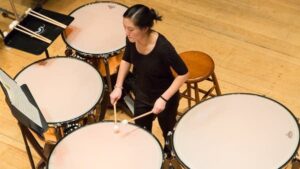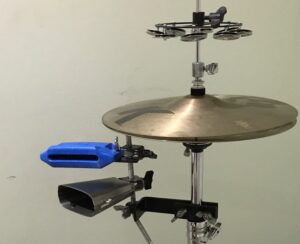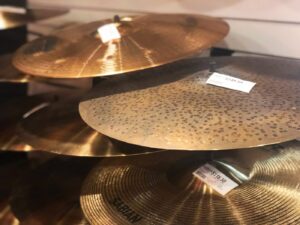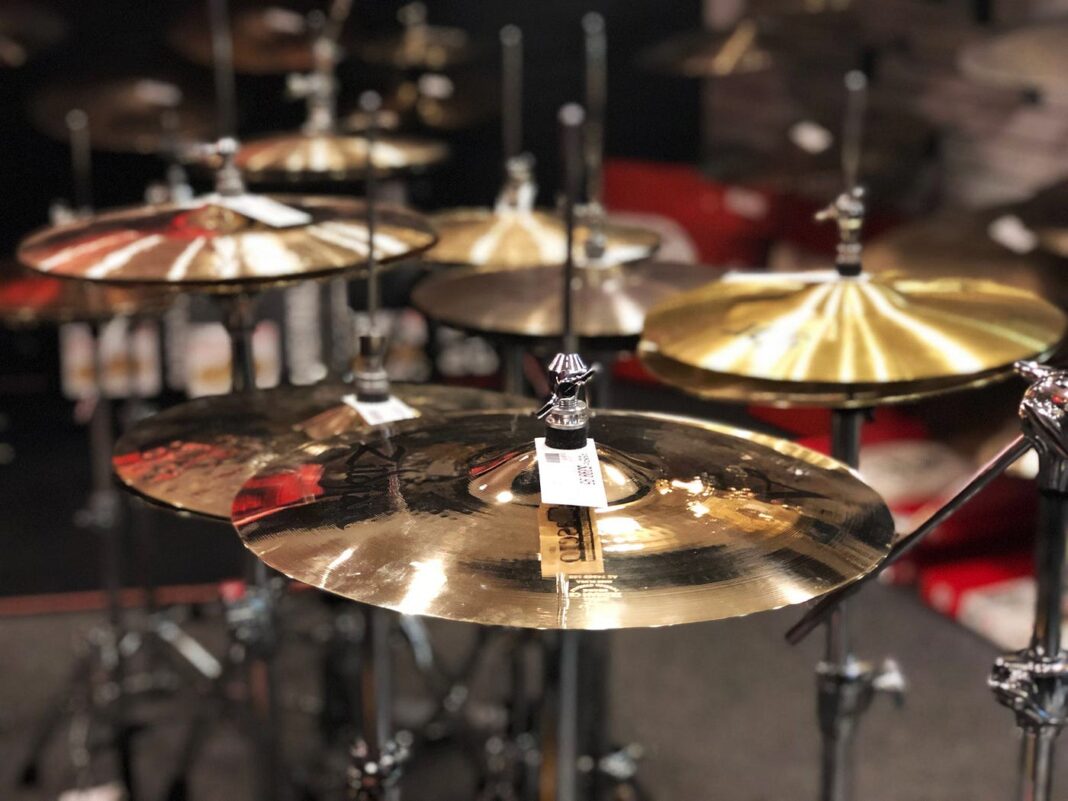The Vibrant World of Percussion
In the dynamic world of percussion, instruments play a vital role in adding rhythm, texture, and intensity to music. Among these, the cymbal is well-known for its shimmering crashes and accents. However, below the cymbal in terms of both frequency and sometimes physical arrangement lies a variety of instruments that contribute equally to the rich tapestry of percussion sounds. These instruments, although often less flashy, are essential to creating the rhythmic foundation and nuanced textures that percussion sections provide in an ensemble.
The Snare Drum: The Backbone of Rhythm
Directly beneath the cymbal in many setups, both literally and figuratively, is the snare drum. The snare drum is a staple in orchestras, marching bands, and drum kits, known for its sharp, staccato sound that cuts through an ensemble. The “snare” refers to the series of metal wires stretched across the bottom drumhead, which vibrate against it when struck, creating the drum’s distinctive “crack” sound.
The snare drum plays a crucial role in maintaining rhythm and driving the energy of a piece. It can range from subtle rolls and delicate ghost notes to powerful backbeats and dramatic flourishes. In many ways, the snare drum is the heart of the percussion section, providing the steady pulse that keeps the music moving.
The Bass Drum: The Deep Voice of Percussion
Another instrument that often sits physically below the cymbals is the bass drum. Known for its deep, resonant boom, the bass drum provides the low-end foundation in percussion. It’s typically used to emphasize strong beats, create dramatic effects, and add weight to musical passages.
In orchestras, the bass drum is struck with a large, padded mallet, producing a deep, thunderous sound that can convey everything from ominous foreboding to triumphant grandeur. In a drum kit, the bass drum, played with a foot pedal, provides the steady thump that anchors the rhythm, complementing the snare drum and cymbals.
The Triangle: A High-Pitched Accent
While not below the cymbal in pitch, the triangle often occupies a similar space in an ensemble, adding delicate accents that complement the cymbal’s shimmer. The triangle is a small, metallic instrument struck with a metal beater to produce a bright, ringing tone. Despite its simplicity, the triangle is capable of producing a surprisingly wide range of dynamics, from soft, tinkling sounds to sharp, piercing notes.
The triangle is often used to highlight specific moments in a piece, cutting through the texture to add clarity and brightness. Its role may be subtle, but it is a critical part of the percussion family, offering a distinctive sound that is both versatile and unique.
The Timpani: The Melodic Drums

Timpani, also known as kettledrums, are another important percussion instrument that can be found in close proximity to the cymbals in an orchestral setup. Unlike the snare and bass drums, the timpani are tuned to specific pitches, allowing them to play melodic lines as well as rhythmic patterns.
The timpani are played with mallets, and their pitch can be adjusted by tightening or loosening the drumhead, often using a foot pedal. This ability to change pitch makes the timpani unique among drums and gives them a special role in orchestral music, where they can add both rhythmic and harmonic depth to a composition.
The Tambourine: Rhythmic Jingles
The tambourine is another percussion instrument often associated with the same space as the cymbal. It is a small frame drum with pairs of metal jingles, known as “zils,” attached to its edges. The tambourine can be played by shaking, striking, or tapping, producing a sound that combines the rhythmic clarity of a drum with the bright, jingling tones of the zils.
The tambourine is highly versatile and is used in various musical genres, from classical to pop, to add rhythmic interest and a touch of sparkle to the music. Its ability to produce both a percussive beat and a shimmering, sustained sound makes it a unique complement to the cymbals in an ensemble.
If you’re finding it challenging to solve the “Instrument below a cymbal” crossword clue, we’ve got the solution for you! Tackling crossword puzzles can be a great way to keep your mind sharp and engaged. Regularly working on puzzles like these can help boost cognitive function and may even reduce the risk of cognitive decline as you age.
When you sit down to solve a crossword, it’s often helpful to begin with the clues you feel most confident about. These are the ones where you either know the answer right away or can make an educated guess based on the letters you’ve already filled in. Starting with these easier clues can help you build momentum, giving you a sense of progress that can keep you motivated as you work through the rest of the puzzle.
The Hi-Hat Stand: The Unsung Hero Beneath the Cymbals
The instrument directly positioned beneath the cymbal in question is the hi-hat stand, a crucial component of a drum kit. The hi-hat itself consists of two cymbals mounted on a stand, which can be played together or separately. The hi-hat stand is what makes this versatility possible, allowing drummers to control the cymbals’ positioning using a foot pedal. This simple yet ingenious mechanism enables drummers to produce the distinctive “chick” sound when the cymbals are closed, as well as the bright, resonant tones when they are played open.

The Evolution of the Hi-Hat Stand
The hi-hat stand has evolved significantly from its early iterations. In the initial stages of drumming, cymbals were placed on low stands and played with sticks, which limited the drummer’s ability to incorporate footwork. However, as drumming techniques and musical demands advanced, so too did the design of the hi-hat stand. By the 1920s, the modern hi-hat stand had begun to take shape, offering drummers more creative freedom and technical possibilities. This evolution allowed for the intricate footwork and rhythmic complexity that modern drumming demands.
The Importance of the Hi-Hat Stand
Although it might appear to be a secondary element in a drum kit, the hi-hat stand is vital for several reasons. First, it enables drummers to keep time with their foot, freeing their hands to play other drums or cymbals. This multitasking capability is essential across various genres, from the steady backbeat of rock music to the intricate syncopation found in jazz.
Second, the hi-hat stand offers dynamic control. Drummers can vary the pressure applied to the pedal, allowing them to produce a range of sounds—from a tight, crisp “chick” to a loose, sizzling open tone. This versatility is crucial for creating the textures and dynamics that make drumming so expressive and engaging.
The Hi-Hat Stand’s Role in Modern Music
In today’s music, the hi-hat stand is indispensable. It’s not just a tool for keeping time; it adds layers of complexity and flavor to a performance. In jazz, for instance, drummers often use the hi-hat to emphasize off-beats, creating a swinging, syncopated rhythm that is a hallmark of the genre. In rock, the hi-hat can drive a song with relentless energy or provide subtle shading in quieter moments.
Advances in Hi-Hat Stand Technology
As with all musical instruments, technological advancements have refined the hi-hat stand over time. Modern stands come equipped with features like adjustable tension, allowing drummers to customize the pedal’s responsiveness to match their playing style. Additionally, some hi-hat stands now feature a two-legged design instead of the traditional three, providing more space for double bass pedals and offering greater flexibility in setup.
FAQ: Instrument Below a Cymbal

What is the instrument directly below a cymbal?
The instrument directly below a cymbal, in the context of a drum kit, is typically the hi-hat stand. This stand supports two cymbals, one above the other, which can be played together or separately by using a foot pedal attached to the stand.
What is a hi-hat stand?
A hi-hat stand is a piece of drum hardware that holds and controls the hi-hat cymbals. The stand allows the drummer to operate the cymbals with a foot pedal, creating sounds by bringing the two cymbals together or allowing them to open and resonate. The stand’s mechanism is essential for producing the characteristic “chick” sound when the cymbals are closed, as well as more sustained, open sounds.
How does the hi-hat stand work?
The hi-hat stand works by using a foot pedal to control the movement of the cymbals. Pressing down on the pedal brings the top cymbal down to meet the bottom cymbal, producing a sharp, closed sound. Releasing the pedal lets the cymbals open up, creating a more resonant sound. The stand also allows drummers to adjust the tension and position of the cymbals for different playing styles.
What is the importance of the hi-hat stand in drumming?
The hi-hat stand is crucial because it provides dynamic control over the hi-hat cymbals, allowing drummers to vary the sound by adjusting the pressure on the pedal. This versatility is essential for creating different rhythms, textures, and dynamics in a performance. The hi-hat stand also allows drummers to keep time with their foot while playing other parts of the drum kit with their hands.
Are there different types of hi-hat stands?
Yes, there are different types of hi-hat stands, ranging from basic models to more advanced ones with additional features. Some stands allow for adjustable tension, so drummers can customize the feel of the pedal. Others may have a two-legged design instead of three legs, providing more space for double bass pedals and offering greater flexibility in setup.
Can the hi-hat stand be used with other instruments?
While the hi-hat stand is primarily designed for use with hi-hat cymbals, some drummers experiment with mounting other small percussion instruments, such as tambourines, on the stand for additional sounds during a performance.
What other instruments are commonly used in a drum kit?
In addition to the hi-hat cymbals, a standard drum kit typically includes a bass drum, snare drum, toms, crash and ride cymbals, and various other percussion instruments such as a tambourine or cowbell, depending on the drummer’s preferences and the music being played. Each instrument plays a unique role in creating the overall sound and rhythm of the music.
Where can I learn more about playing the hi-hat and other percussion instruments?
You can learn more about playing the hi-hat and other percussion instruments through online tutorials, music schools, or private lessons with an experienced drummer. Many instructional books and videos are also available that provide step-by-step guidance on how to master drumming techniques, including the use of the hi-hat stand.
Conclusion: Instrument Below a Cymbal
The hi-hat stand, positioned directly below the hi-hat cymbals, plays a vital role in modern drumming. It offers drummers the ability to control and vary the sounds produced by the cymbals, adding a dynamic layer to their performances. Though it may seem like a simple piece of equipment, the hi-hat stand is essential for creating the rhythms, textures, and expressions that define many musical genres. Whether you’re a beginner or a seasoned drummer, understanding and mastering the use of the hi-hat stand can greatly enhance your drumming skills and broaden your musical versatility.




